Rock from the Edge
(2)
By Keith Newman (Copyright
2002-2004)
Creative Kiwis with
export success
Probably too numerous to mention everyone but let me know if I've missed anyone important.
Who else made a living or toured in the US for any reasonable period or had chart success?
I need to know about Kiwi international rock, jazz, country success, particularly in the 60s and 70s so we get the record straight. I think it's going to be difficult to track the future. It's going to be amazing. This is my effort to archived the pioneer. Help me by submitting information, making corrections, supply pictures wordman@wordworx.co.nz )
For many Kiwi musicians in the 60s and 70s Australia was ‘overseas’ and there was a mass movement across the Tasman. A large number of Australian bands featured a New Zealander somewhere in the line-up or the road crew, and many Kiwi bands were soon assimilated into the Australian culture.
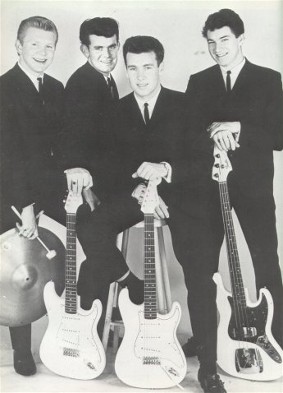 At the end of 2002 Australia showed its commitment to the musical
giants in its cultural legacy by staging a retrospective tour featuring
its top rock ‘n roll artists. It’s a Long way to the Top (if
You Want to Rock n Roll) paraphrased the AC/DC hit and featured in its
line-up Kiwis Dinah Lee, Max Merritt (at right with
Meteors), Ray Columbus
& the Invaders (featuring Dave
Russell on guitar) and La De Das founding member Kevin Borich.
The tour played to 160,000 people in 18 arenas in September 2002.
At the end of 2002 Australia showed its commitment to the musical
giants in its cultural legacy by staging a retrospective tour featuring
its top rock ‘n roll artists. It’s a Long way to the Top (if
You Want to Rock n Roll) paraphrased the AC/DC hit and featured in its
line-up Kiwis Dinah Lee, Max Merritt (at right with
Meteors), Ray Columbus
& the Invaders (featuring Dave
Russell on guitar) and La De Das founding member Kevin Borich.
The tour played to 160,000 people in 18 arenas in September 2002.Johnny Cooper New Zealand’s first rock ’n roll artist toured Korea with a New Zealand Broadcasting Service Entertainment Unit in 1953. He had a hit with Pie Cart Rock ‘ n Roll. However he was a reluctant rock ‘n roller preferring instead the country music he started out with.
Of course New Zealand’s first rock ’n roll idol was Johnny Devlin. After six tours of New Zealand and recording 47 songs in 18 months he headed to Melbourne with his band the Devils to appear with the Everley Brothers. Soon he became a part of the Australian scene with many TV appearances in 1959 and a top 20 hit. In 1965 on the advice of The Beatles manager Brian Epstein he went to the UK where he signed a three year recording contract with CBS. His second single made radio London’s top 10 but he ran into work permit problems and was forced to return to Australia in 1967. Devlin now in his 60s is still performing his rock ‘ n roll shows to Australian audiences having played well over 2000 shows in the past decade.
Max Merritt & The Meteors went to Sydney for a short visit in 1963 but didn’t make a major impact until later in the decade. In the early 70s Max became Australia’s ‘King of Soul’. After 10 years in the UK and 22 years in Los Angeles, Max decided to call Melbourne home again in 2003. He’d been one of LA's top set builders, responsible for Madonna's Material Girl set, and rebuilt his own home after it was destroyed in the 1996 earthquake. His return to Australia coincided with gigs supporting legends Ray Charles and Wilson Pickett and The Long Way To The Top regional tour which featured a number of other Kiwi artists who'd been adopted by the Aussies.
From
1975 Max and the boys had spent a decade touring the UK with bands like
Fleetwood Mac after signing to Arista records. In the band’s heyday it
featured top Kiwi drummers Johnny Dick
and Bruno Lawrence and
bass players Teddy Toi, Billy
Kristian, Dave Russell (bass and
guitar) and John ‘Yuk’ Harrison
who all went on to have successful careers across the Tasman.
Ray Columbus and
The Invaders (below) commuted to Sydney in 1963 and 64 and had a string of
hit singles including Kupow (an i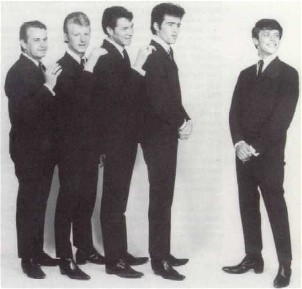 instrumental, embraced as a
surfing classic, a cover of I Wanna Be Your Man, On My Mind
and then hit the big time with She's A Mod which went to number
one for seven weeks across Australia. The follow up YoYo didn't
fare as well but gained a number one in New Zealand and the follow up C'mon
and Swim made the Top 40. Till We Kissed reached number four
in Australia and hit the top spot twice back home.
instrumental, embraced as a
surfing classic, a cover of I Wanna Be Your Man, On My Mind
and then hit the big time with She's A Mod which went to number
one for seven weeks across Australia. The follow up YoYo didn't
fare as well but gained a number one in New Zealand and the follow up C'mon
and Swim made the Top 40. Till We Kissed reached number four
in Australia and hit the top spot twice back home.
Ray Columbus & the
Invaders made five national tours of Australia between late 1963 and
early 1965. They supported The Searchers with Dinah Lee as part of the
act, The Rolling Stones and Roy Orbison, Eden Kaine, Tom Jones and
Herman's Hermits and were double billed with Billy Thorpe and the
Aztecs.
Ray then moved to San Francisco where he was one of the first to record on 8-track with his backing band The Art Collection which also
supported The Turtles in 1967, played the San Francisco International
Pop Festival and other festivals in San Jose (with the Steve Miller
Band) and supported Eric Burdon & The new Animals at San Francisco
Auditorium. In 1968 he was back in New Zealand featuring in C’mon
and signed to contracts that would keep him at home for 16-years. Since
the 1970's he's regularly gone to the US to promote New Zealand music.
In 1964 Bill and Boyd moved
to Australia on the strength of their first Australian hit Chulu
Chululu recorded live at the Rotorua Sound Shell. The duo quickly
became regulars on television and on the club circuit. They settled in
Australia and in 1968 toured America with the Supremes and Herb Alpert.
The Action (with Evan Silva), Compulsion (featuring Reno Te Hei, Paddy Beach and Ben Kaika and later Evan Silva on vocals) made inroads in the club scene in Sydney and Melbourne and were soon joined by many others including Leo de Castro (Cahoots, The Browns, King Harvest, Friends, Johnny Rocco Band and Babylon) and cabaret singer the late Ricky May (1979 Australian Entertainer of the Year).
Andy
Anderson best known on the small
screen for his parts in TV series Marlin Bay and The Sutherlands, was an early
convert to rock ‘n roll playing in several Kiwi bands before hoping
the Tasman at the age of 16 with his sparkling green Ludwig drums. He
changed his name to Andy James and ended up and fronting one of
Sydney’s most notorious rhythm n blues bands in 1965 the Missing Link.
They went through major line-up changes, recorded a couple of
singles and an album and then Anderson went on to form Running Jumping
Standing Still which played the Melbourne scene and became a further
outlet for his wild stage antics.
After
haemorrhaging on stage he was hospitalised and once he'd recovered went on to form his
own band the aptly named Andy James Asylum. He then formed Mother
Superior, “an experimental outfit mixing R&B players with brass
players”.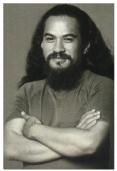
In 1961 guitarist and soulful singer
Guitarist
and singer Mike Rudd (Chants R&B) moved to Australia and
joined Ross Wilson's Party Machine on bass in June 1967. In April 1969
Rudd formed Spectrum and Ariel in 1973
and is regarded as a seminal figure in the 60s-70s Australian rock
scene.
The La De Das (Kevin Borich is still considered one of ‘Australia’s’ best guitarists) were hot property and were regarded as one of the top Aussie bands for a number of years. Keyboard player Bruce Howard has a recording studio there.
Dalvanius & the Fascinations made a real
mark on the Australia circuit and played for several years on the P
& O Cruise line along the American Hawaiian coast. They provided
providing vocal backup on albums by Renee Geyer, Richard Clapton,
Johnny O’Keefe, Reg Lyndsay and Sherbert’s triple platinum Life
is For Living album. This led onto three years of touring with Sherbert, which featured New Zealand songwriter and keyboard player Garth
Porter.
When Sherbert broke up, Dalvanius returned to New Zealand and took
Tokoroa-based funk band Collision to Australia getting them
signed with Festival. The Fascinations and Collision toured extensively
throughout Asia. Dalvanius & the Fascinations continued to tour as
part of the Poi E ‘concert extravaganza’ which debuted in 1985 at a
Royal Command Performance. The single Poi E made the NME
Single of the week. The band later toured the US.
Charlie Tumahai
played with Australian unit Friends with his mate Leo De Castro then Mississippi before they became Little River
Band and on to join Be Dop Delux in the UK before returning home to
join Herbs which had some degree of offshore success touring
Noumea.
John Rowles
brother Frank or Frankie Rowles had his own musical career in the
late 1960s and early 70s, originally recording as Frankie Price
touring pubs and clubs on both sides of the Tasman and regularly performing
in Tahiti and around the Pacific Islands. Frankie Rowles died on March 24,
2004 aged 59.
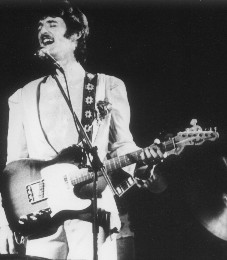 Keyboard
player Mal Logan from Wanganui was in several of Renee Geyer’s
bands. Mal later joined the Little River Band. Doug Rowe
bass player from The Saints and The Castaways formed Australian band
Flying Circus which later featured well-known session guitarist Red
McKelvie. Tim Piper from Christchurch (Chants R& B, The
Breakaways and now a music teacher in Sydney) went on to play guitar with a number of top Aussie bands
including Chain, Carson and the Renee Geyer Band. He worked closely
with Claude Papesch (Electric Heap) who formed Johnny Devlin’s
Devils in the late 1950s and went on to play in several units across the
Tasman featuring local players Ricky May and Bruno Lawrence.
He was a temporary member of Blerta during their sojourn in
Sydney as was Tim Piper. Blind keyboardist extraordinaire, Papesch was so revered he was elected mayor of
Lithgow City in 1984, but died aged 45, in February 1987 before he’d
completed his term of office.
Keyboard
player Mal Logan from Wanganui was in several of Renee Geyer’s
bands. Mal later joined the Little River Band. Doug Rowe
bass player from The Saints and The Castaways formed Australian band
Flying Circus which later featured well-known session guitarist Red
McKelvie. Tim Piper from Christchurch (Chants R& B, The
Breakaways and now a music teacher in Sydney) went on to play guitar with a number of top Aussie bands
including Chain, Carson and the Renee Geyer Band. He worked closely
with Claude Papesch (Electric Heap) who formed Johnny Devlin’s
Devils in the late 1950s and went on to play in several units across the
Tasman featuring local players Ricky May and Bruno Lawrence.
He was a temporary member of Blerta during their sojourn in
Sydney as was Tim Piper. Blind keyboardist extraordinaire, Papesch was so revered he was elected mayor of
Lithgow City in 1984, but died aged 45, in February 1987 before he’d
completed his term of office.
Kiwi drummers were also in demand: Barton Price joined The Models, Rob Hurst linked up with Peter Garrett and Midnight Oil, Brent Eccles became an Angel and former Avengers drummer Hank Davis and guitarist Dave Brown went on to form Bakery.
Dave Miller's Byrds from Christchurch had been a hard working, hard rockin’ unit influenced by the heavier British sounds. They moved to fill the shoes of Ray Columbus and the Invaders at the Shiralee in Auckland. When the unit broke up Dave Miller headed to Australia in 1966 and formed the Dave Miller Set, which made a major impression.
Rod Coe
the original bass player with Craig Scott’s Revival
went on to become a highly respected session musician and producer in
Australia playing with Murray Partridge’s band Freshwater,
The Doug Parkinson Band and The La De Das.
Highway, featuring Bruce Sontgen on vocals, Phil Pritchard on
guitar, George Barris on bass, George Limbidis on guitar and Jim Lawry
on drums after local success moved
to Melbourne in 1970. Hi-Revving Tongues were residents at
Whiskey A Go Go in the heart of Sydney's club scene for before returning
to New Zealand to support their single Rain & Tears which was heading
toward the number one spot on the New Zealand charts.
Simple Image also moved to Sydney where they played clubs and did session work including providing the backing for Gene_Pierson's psychedelic hit version of the Four Top's Reach Out in 1970. The band broke up in 1971. Aussie draft dodger Pierson had performed and recorded in New Zealand for a couple of years before returning to Australia in 1969. Simple Image disbanded in 1971 however guitarist and singer Barry Leef (pictured at right) had his own bands in Sydney for three decades often with former Highway guitarist Phil Pritchard. Leef was for many years married to singer Erina Clark who is sought after in her own right as a recording artist and session singer – she sang the theme song for TV series Home and Away for example and in 1997 performed in Los Angeles, London, Ireland, Istanbul and Beijing.
In June 1972 Kiwi superband, Ticket crossed the Tasman, to perform a month long residency at Sydney's Whiskey-Go-Go. The reaction exceeded everyone's expectations, and rather than returning to Auckland, Sydney based promoter Robert Raymond secured them a further residency at Chequers nightclub and book them for performances in Queensland and Victoria. Ticket featured Eddie Hansen on guitar, Paul Woolright on bass, Trevor Tombleson on vocals and Ricky Ball on drums.
The band’s single
Awake /Country Radio was released on Atlantic Records while they were
across the Tasman and they recorded their second album "Let Sleeping
Dogs Lie" in Melbourne. This was self-produced and recorded at Channel
Nine's 16-track studio and released in late 1972. There were big plans
for the band after they appeared at the Ngaruawahia music festival back
home in 1973 including touring with Black Sabbath but within months the
band had folded after conflict over lifestyle and musical directions.
Eddie Hansen now runs his own successful recording studio working on
a range of project and collaborations in Brisbane Australia. Another
Kiwi guitar hero Harvey Mann is in regular contact with him and
also involved in session work and recording. Drummer Glenn Absalom keep
in touch with them and there are plans for a reunion which in itself
would be something of a supergroup as between them they are past members
of Ticket, The Underdogs, Space Farm
and Living Force.
Airlord, formed in Wellington in 1976, played the pub circuit and headed for Australia the following year where they recorded what has been described as an excellent album of symphonic rock music called Clockwork Revenge. The group which only played originals ,disbanded in 1978. Its members were Steve MacKenzie (guitar, vocals), Ray Simenauer (guitar, vocals), Brad Murray (bass, vocals), Alan Blackburn (keyboards) and Rick Mercer (drums).
Dragon ( featuring brothers Marc and Todd Hunter on vocals and bass respectively, Robert Taylor on guitar and the late Neil Storey on drums and later Paul Hewson on keyboards) crossed the Tasman in 1974 and after 18 months of hard slog made it into the mainstream. They were rarely out of the Australian charts between 1976 and 1978. They were awarded Band of the Year, Most Popular new Group and achieved gold and platinum records. They toured the US twice with little success, although their music did get airplay. A later version of the band toured Europe as support for Tina Turner until multiple tragedies saw an end to their career. Drummer Neil Storey died in 1976 and keyboardist and songwriter Paul Hewson died in Auckland in January 1985.
Mi-Sex (featuring the late Steve Gilpin plus Richard Hodgkinson, Don Martin, Murray Burns and Kevin Stanton) also used Australia as a launching pad for their international recording and touring career and while their records made the US charts and a tour was planned it never eventuated.
Nash Chase
and his wife left New Zealand for the entertainment circuit in Sydney in
February 1973. Tony Littlejohn from The Movement and Blerta had
his own jazz-funk unit in Sydney between 1975-77 simply called
Littlejohn, Mother Goose headed to Australia in October 1976 and
after two albums faded into obscurity. Tolepuddle and Brent
Parlane also made some impact on the Sydney scene.
Jon Steven’s
formed Noiseworks there and after the death of Michael Hutchence
worked with INXS and in 2002 toured the US with them. Two
and a half years after becoming INXS’ “probationary” singer Jon
Stevens had the job officially in time for their 2003 album. He quit
soon after.
In the 90s Ardijah
were regularly gigging around Sydney venues. Fan Club got airplay
in Sydney and had a number one hit in Indonesia. Ace guitarist Harvey
Mann apparently still lives in Goulburn,
NSW running a recording studio after
moving to Australia permanently in 1979.
Female singers who’d reached the height of their career in New Zealand and migrated to add to the Australian talent pool included Sandy Edmonds, who was primed for major chart and fashion success in New Zealand by promoter Phil Warren. Dinah Lee who had a top 10 hit with Don’t You Know Yokomo and with the support of Johnny O’Keefe was soon recognised as a major talent. She moved to London for a while, was the only Australasian female singer to appear on America’s Shindig show and is still sought after on the Australian cabaret circuit.
Allison Durbin
moved to Australia in October 1966 where she sang with the Mike Perjanik
Group before pursuing a solo career. She got significant TV
exposure and picked up the "Queen Of Pop" award for Best
Female Artist in 1969, 1970 and 1971.Her husband fellow Kiwi Howard Gable was an extremely influential
producer there in the late 60s, early 70s, with credits including The
Masters Apprentices, Zoot and many others.
Maria Dallas recorded six albums for Viking between 1966 and 1967 where she recorded several albums and singles. In 1967 she moved to Australia, before venturing to Nashville, where she did a considerable amount of recording. New Zealanders had almost forgotten about her until she returned in 1970 with a song called Pinocchio which went all the way to number one on the national charts.
Tina Cross maintained a high profile with numerous television appearances. When the hits dried up in 1982 she ventured to Sydney and began singing on the cabaret circuit. In 1984 she teamed up with composer-pianist Leon Berger and formed Koo De Tah. They had a hit with Too Young For Promises in 1985, which made it to 6 on the Australian charts.
Sharon O’Neil
remains a prolific recording artist and songwriter much revered in
Australia. Singer Beaver lived and worked in Australia for a
period and recorded the album Live At Ronnie Scott's in London in
1987. Jenny Morris arrived in Australia in 1980 with the
Crocodiles, joined QED, and recorded an album in 1984. She was a backing
singer with a number of bands including INXS, achieved mainstream
airplay with several singles and toured Europe in 1990 as support to
Prince. Margaret Urlich has had platinum albums in Australia and
New Zealand and has worked in studios in London and Los Angeles.
Annie Crummer’s opportunity knocked when
she had a number 16 spot on the local charts after appearing on the show
of the same name back in the late 70s then her enormous voice could be
heard way out front of the hit For Today by the Netherworld Dancing
Toys. After a spot with When the Cats Away she supported Sting, K D
Laing and Michael Jackson on their New Zealand tours and released solo
albums Language and Seventh Wave. Then in 2000 she
returned from doing a musical in Australia. In 2003 she scored the key
role of Killer Queen in the Australian version of the stage musical
We Will Rock You.
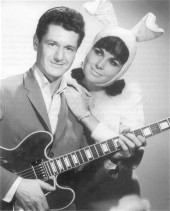 Peter
Posa was enticed to the US in the early 60s after he'd had major
success in New Zealand with his Shadows influenced but unique guitar
stylings. Success didn't come as quickly as he'd hoped. He'd personally
met Frank Sinatra and Dean Martin and played in Los Angeles but after 6
months at the age of 24 he returned home to continue his career.
Peter
Posa was enticed to the US in the early 60s after he'd had major
success in New Zealand with his Shadows influenced but unique guitar
stylings. Success didn't come as quickly as he'd hoped. He'd personally
met Frank Sinatra and Dean Martin and played in Los Angeles but after 6
months at the age of 24 he returned home to continue his career.
In 2003, at the age of 61, he was awarded a gold disc by BMG for his
greatest hits CD which had come out in 1998. Posa had gone to ground for
a number of years after two car accidents left him facing chronic pain
and sent him into a state of depression.
His version of White Rabbit was the biggest selling
instrumental record by a New Zealand artist having reached number one
in Australia and New Zealand in 1963. Volume wise only Gray Bartlett
has sold more instrumental albums.
Gale Garnett was born in Auckland in July 1942, moving with her parents to the US in 1951. Her song We'll Sing In The Sunshine was a reached number four on the US charts. She was a child of folk music fad in the early 60s influenced by the hippie movement. She wrote songs as a hobby, but in 1963 RCA Records, impressed with her voice and songs, signed her up. We'll Sing In The Sunshine was covered with moderate success by the UK band the Lancastrians in 1964. Her second single Lovin' Place reached number 54 on the US charts in 1965. Her band Gale Garnett and the Gentle Reign had a minor hit with Breaking Through .
Gale
Garnett was also an actress, appearing in stage and TV shows including
77 Sunset Strip and Bonanza. She now lives in Toronto, where she is a
full-time writer and a part-time actress. She had a bit part in My
Big Fat Greek Wedding as one of the bride's aunts.
Record
executive John McCready was a major force in the New Zealand
music scene for nearly three decades. He helped develop the careers of
numerous artists including the La De Das, Shona Laing and Sharon
O'Neill. He got CBS Records up and running in New Zealand and
internationally signed Thin Lizzy and Kraftwerk to the label and spent
time on the road with many of Motown's biggest stars.
Tony McMaster began his career as a
professional musician in the 70's playing bass guitar with Hello Sailor,
Alistair Riddell and Red Mole Theatre before moving to New York in 1979
where with three other Kiwi's he formed The Drongos. The Drongos
toured and performed constantly for seven years and released two
critically acclaimed records. Tony co-produced their second album Small
Miracles. When the group disbanded in 1986 he developed his skills as a
sound engineer for both live and recording and went on to work at two
New York studios and did live sound for several New York bands and for
European tours. In 1988 Tony returned to New Zealand.
The other members of the Drongos were
Jean McAllister who is the wife of Tony McMaster and mother of four
children. Jean sings in the Jubilation Choir and is a schoolteacher,
Stan Mitchell lives in LA and still busy playing in lots of bands.
Richard Kennedy lives near London and plays mostly solo these
days.
Drummer Richard Burgess
who played
with a bunch of Kiwis in Australia in the early 1970s joined Quincy
Conserve in time to record their single Aire of Good Feeling.
He was taken by surprise at the invitation to join the unit as he'd just
booked a ticket to the UK. He stayed with the band for their third album
then headed to the US where he studied at Berklee School of Music and
picked up a number of high profile gigs as a producer.
Among many others he produced Spandau
Ballet's first two gold albums and first six hit singles and
worked on 24 charted singles and 14 hit albums.Today
Burgess heads the Folkway Records at the Smithsonian Institute in
the US.
Luna
have been based in New York city for a decade. The main writer and lead
vocalist Dean Wareham was born in New Zealand but moved to the US
as a child. While in the US as a member of Galaxy 500 he met up with
another bass player Justin Harwood (brother of Debbie/When The
Cats Away) when his then band gigged with Justin’s band The Chills.
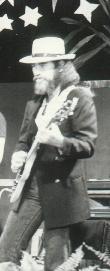 When Justin left the Chills he moved to New York and he and Dean formed
Luna.
When Justin left the Chills he moved to New York and he and Dean formed
Luna.
Luna recorded five albums with Justin, toured the USA, Japan, Europe and Australia and were personally asked by Lou Reed to support the Velvet Underground on their reformation tour several years ago. Justin also formed an experimental instrumental 'supergroup' in America called Tuatara, featuring Peter Buck from REM and Barret Martin, drummer with rock band Screaming Trees. They have released three albums. Upon the birth of their daughter Coco, Justin and his wife returned to New Zealand where Justin is now working in the IT industry.
Blues
master Midge Marsden has toured the USA several times -
specifically California, Texas, Mississippi and Louisiana. He’s even
bought back forgotten legends to perform in New Zealand. Midge performed
in London in conjunction with the All Blacks 1997 British Tour and
performed at Ronnie Scott’s in Soho.
Billy T K left for the US in the late-70s and worked in the One Step Up Studio in Hollywood with a view to getting an album together. He left before the project was completed. Former Ragnarock vocalist Lea Malfrid is a song writer for Bonnie Raitt and other artists in LA.
The In-Betweens were in Los Angeles for 12 months in the late 70s. Wellington bass player John Walmsley (not the Hi-Revving Tongues member) became a member of the Lemon Pipers. Living Force guitarist Eddie Hanson recorded in the US in 1979.
Hello Sailor (Graham Brazier, Harry Lyon, Lisle Kinney, Dave McArtney) flew to the Los Angeles on August 27, 1978 but their serious attempt to crack the market turned into one big party. They played some top gigs, but spent more than they were earning. They teamed up with Dragon in the US and the party got wilder. They came back broke and disillusioned in 1979. Another opportunity was lost when Graham Brazier turned down an offer to join The Doors post-Morrison. Despite being broke they were still hassled by the tax department on their return. Dave McCartney, who went on to form his own units including the Legionnaires, also spent time in Germany and released a solo album in 2004.
Contemporary
export artists
The fact is it's impossible to keep track of all the success
stories of Kiwi bands, singers, songwriters, session musicians,
producers and entrepreneurs doing amazing things offshore, so I've
decided to have a cut off point and become more focused. The time period
I'm covering is from the 1950s through to the 1980s. However just for
the record I will keep a few mentions from the archive to illustrate the
point.
Of course Crowded
House has been our biggest export success in terms of international
recognition and the playing of Don't Dream it's Over on the
release of Nelson Mandela was indeed a momentous occasion.
OMC (Pauli Fuemana / Otara Millionaire’s
Club) from Otara racked amazing
chart success offshore. How Bizarre became a number one
hit in New Zealand in early 1996, soon reaching top spot in Australia.
By mid-1996 the single was top of the Canadian hit parade and number
five in the UK. It eventually went
to number one in eight countries including
the US where the album sold in excess of a million copies.
Te
Vaka had released
three CDs which had reached the top spot on many ‘world music’
charts in the US, Canada and Europe. They have toured the world
constantly since 1997 having performed in 27 countries.
Dianne Swann,
a former member of When the Cat’s Away returned to New Zealand early
in 2002 after 11 years in the UK with her partner former Mocker Brett
Adam. She formed a band
called Julie Dolphin in London and then signed under a new name Boom
Boom Mancini with another company Alamo Sounds which was owned by Herb
Alpert and Gerry Moss. However the company folded putting a restraint on
any further recordings by the band and preventing the release of what
they’d already accomplished. During her time in the UK she performed
and recorded with Radiohead.
Keyboard player and songwriter Greg Johnson and singer Ted Brown were still in the Los Angeles in 2004, having completed a new album with Dandy Warhols producer Clark Stiles (after the collapse of Immergent Records where they recorded an unreleased EP with Richard Dashutt of Fleetwood Mac fame). They perform weekly in Santa Monica and Hollywood with a number of songs having appeared on TV shows and film.
Contemporary acts Shihad (Rolling Stone Australia’s Artist of the Year and Best Rock Act 2001) renamed as Pacifier to avoid stirring up further middle eastern confusion were based in Los Angeles. In September 2002 Stellar featuring Bo Runga were performing in Germany and with the feelers in the UK. Bo’s sister Bic Runga who’s single Sway made it onto the American Pie soundtrack released her new album to instant chart success at home and high hopes abroad. Anika Moa was signed to Atlantic Records in New York her single Youthful which made it to the American Sweethearts soundtrack. For the third time in five years New Zealand's Garageland hit the road in America in 2002.
And
a strong contingent of Kiwi musicians were invited to perform at the South By Southwest (SXSW)
Music Conference & Festival in Austin Texas in 2003. Liam Finn’s band Betchadupa led the pack of
six New Zealand bands
sharing the glory with The Datsuns, The D4, 8 Foot
Sativa, goodshirt, and Damien Binder. The Datsuns and
The D4 appeared at SXSW 2002 and returned in 2003 with major
label deals under their belts.
Carla Werner
from Kaitaia, who has been living in Australia since her late teens,
signed a record deal with a major US record label Columbia and is now
based in LA . Her debut album was titled Departure. She supported
Chrissy Hynde and the Pretenders on their 2004 New Zealand tour at
Chrissy’s request.
After
winning the 2003 Australian Blues Performer of the Year former Red Mole
and Coup Detat vocalist Jan Preston, originally from Greymouth
and now based in Sydney, headed for Memphis in January 2004 representing
Oz in the contest for International Blues Performer Award.
The 2004 International Songwriting Competition (ISC) was won by Moana Maniapoto of Auckland for her world music song Moko. This is the first time any major songwriting competition based in the USA has awarded its top honors to a songwriter from outside the US. There were 11,000 entries from 60 countries. Described as the "diva of Maori music," Moana Maniapoto has consistently pushed the boundaries of Maori music with her unique blend of traditional Maori musical elements and contemporary western grooves. Her band Moana and the Tribe tour throughout the world and are one of the most successful indigenous bands to emerge from New Zealand.
Stereogram signed the biggest international record deal – a seven figure sum with Capitol Records for five albums - in New Zealand music history. An A&R man had been impressed by the rise and rise of Kiwi bands and found a video for one of their songs on the band’s web site. They recorded their debut album Schmack! with Paul McCartney’s producer and played a string of gigs and festivals across the US. Their album was released in April 2004.
![]() Next Page: Kiwi's in the UK plus Jazz &
Country
Next Page: Kiwi's in the UK plus Jazz &
Country
![]() Back to
Rock Exports intro
Back to
Rock Exports intro
![]() Kiwi Music Gallery (two pages of
photographs from Keith Newman's collection)
Kiwi Music Gallery (two pages of
photographs from Keith Newman's collection)
Bruce Sergent's thorough site of Kiwi rock: http://www.sergent.com.au/
(Ray Columbus, Peter Posa and Max Merritt photos from Bruce's site)
The Kiwi Edge: http://www.nzedge.com/
Kimball Duncan’s pages on the Australasian rock scene http://www.milesago.com
Oldies website: http://www.oldies.com
Andrew Schmidt: http://www.ugly-things.com
Stranded in Paradise (John Dix)
Hostage to The Beat (Roger Watkins) 1995
When Rock Got Rolling (Roger Watkins) 1989
Endless research and interviews by Keith Newman.
Photographs: Ricky May, Frank Gibson Jnr, Mike Nock, Shona Laing and Billy TK by Keith Newman
Individuals who’ve helped with key information so far:
Maurice Greer,
Suzanne Lynch, Dalvanius Prime, Phil Yule, Ray Columbus, Bill
Hester, Lynne
Thompson of Wild Rose Music,
Alison Poulsen, Andrew
Schmidt, Rikki Morris, Vicki Perjanik, Bruce Sergent, Kimball Duncan,Gray
Bartlett, Vaughan Rapata,
....